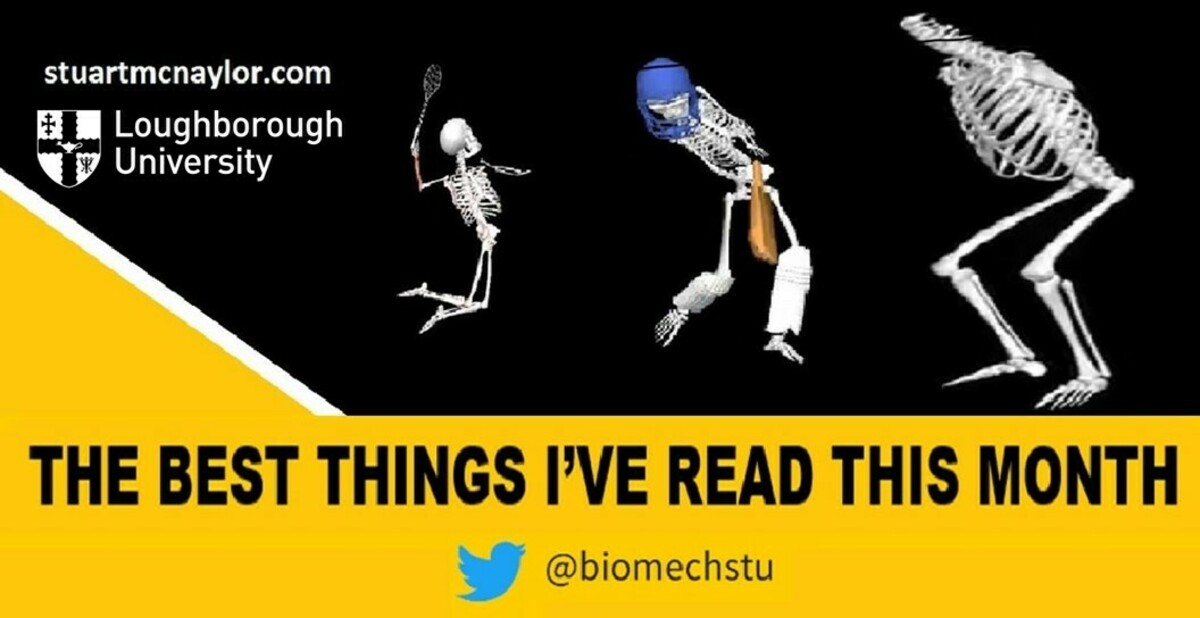
Welcome to the 79 new people who subscribed last month! If you find the newsletter useful, please share this link with any colleagues, students, or others who might like it.
There seems to be a bit of a methods focus in this month’s newsletter, which has the advantage of being broadly applicable but perhaps the disadvantage of lacking new insight or interesting results. Anyway, here’s what I would like to share with you…
What Have I Been Reading?
Cinematography: The International Society of Biomechanics’ most prestigious award is named after Eadward Muybridge, who was the first to use cinematography for the study of human and animal movement. This detailed Twitter thread below explains the history of his famous “The Horse in Motion” work and is well worth a read.
When Théodore Géricault painted The Derby at Epsom in 1821, that's genuinely how people thought horses looked when galloping.
— The Cultural Tutor (@culturaltutor) November 26, 2022
It wasn't until 1878 that photography proved otherwise.
But people didn't like the "correct" way; it looked wrong to them... pic.twitter.com/MCP5j9b8PW
Wearable Sensors: What sensors are inside an inertial measurement unit (IMU) and how do they work? This blog post answers those questions and more, with illustrative diagrams and reference to underpinning theory. On the topic of wearable sensors, here is a review of their design and how this has progressed over the years, with a specific focus on clinical diagnostics.
Markerless: What should clinician-scientists know about markerless motion capture? This article details the experiences of one group, including their processes, a comparison with a marker-based system, and their opinions regarding its clinical use. They even share their data for others to explore.
Sampling: One of the challenges of wearable technology is the balance between the simultaneous desires of collecting data at high frequencies and prolonging battery life. This article discusses these issues and quantifies the effect of sampling frequency on errors in peak force estimations from pressure insoles during running. It’s a nice study that could be useful to reproduce for anybody looking to take data collection out into ‘the wild’. The findings suggest that “battery life could be increased up to 5x at the expense of 3% errors”. There is also a useful thread summary .
Modelling: There have been a few review articles recently on computer simulation modelling within biomechanics research. This latest article reviews predictive musculoskeletal simulations and optimisation problem formulations, with sections covering broad areas of model components, constraints, optimisation approaches, and applications. In my admittedly biased opinion, this makes a nice companion to our narrower review from last year on applications within maximal effort sporting movements.
Statistics: If you’ve ever taken a statistics course or spent much time reading the Methods sections of scientific articles, it’s likely you may have heard of Bland and Altman. Well from 1994 to 2018, they wrote a series of 68 short notes for The BMJ to educate readers on various statistical concepts. These are often just a few paragraphs in length, include specific examples, and are written to be accessible to a wide audience. It’s well worth a scroll through the contents list for an introduction or reminder of any topics of interest.
Thank You
TThat’s all for this month. If you found it useful, please forward this email or share this link with colleagues, students, or on social media.
Take care, and thank you for reading. I hope you have a great December.
Stu